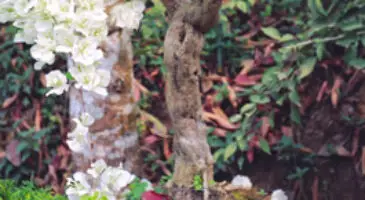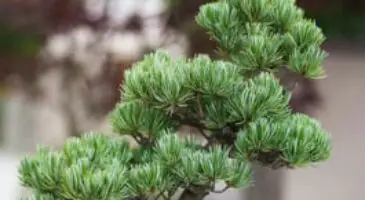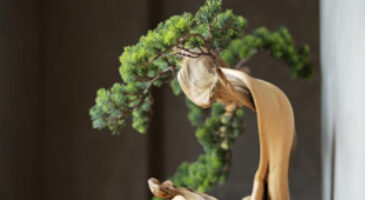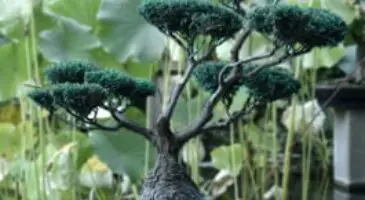Table of Contents
Can I use perlite for bonsai? If you are wondering if perlite is good for your bonsai trees or not, make sure you read on to know if it is a good move in the first place.
What is perlite
Before anything else, you should know first what perlite is and what it is not. Perlite isn’t necessarily a type of soil. Instead, this is a type of soil additive you can also use as growing medium.
This is also not a kind of fertilizer and doesn’t have microbial and nutritional value to soil or plants themselves. The benefits of perlite are solely derived from the fact that it keeps the structure of the soil light as well as loose.
Instead, perlite is a type of lightweight, not toxic, and inorganic soil amendment. Perlite, or also called expanded pyrite, is a form of mined volcanic rock mixed into different products for industrial building for stability like cement, loose-fill insulation, masonry construction, and plaster.
This is also often used as one form of filter media added to swimming pool filters. This is also a filter aid for waste water and for beverages like beer, juices, and wine.
Perlite is used in the gardening world for improving soil structure through offering aeration and proper drainage. This is like air for soil and is the second best thing next to compost as it circulates air between roots for healthy and strong growth of plants.
Can perlite benefit bonsai trees
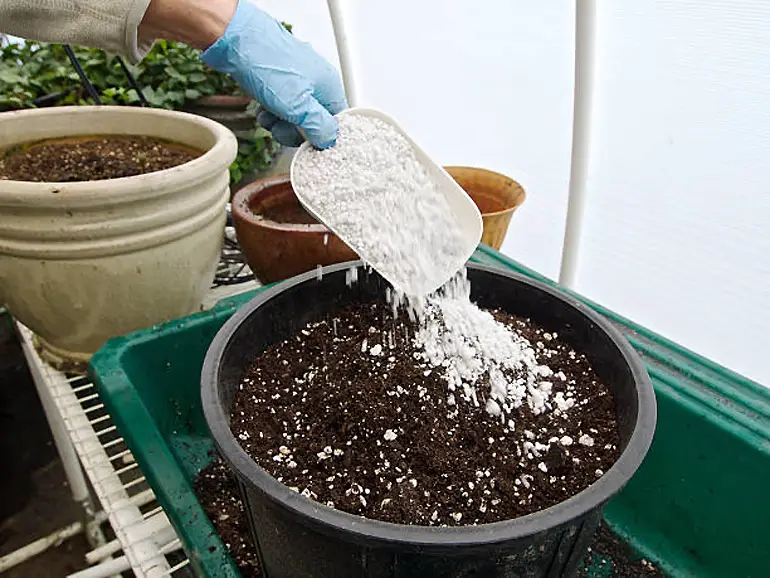
Perlite is made from a specific kind of volcanic glass heated at 850°C to 900°C. This can quickly expand from 7 to 16 times its original formula in order to form a hard, ultra lightweight but extremely absorbent material.
This is popular and common in horticultural use as it helps improve drainage and reduces weight in traditional composts wherein this is combined at 10% by volume.
When used for bonsai trees, perlite can help lessen the weight of big pots, particularly large boxes and growing containers used to establish collected trees. Perlite can be combined with some other materials that are meant to be used in bonsai pots.
But, its lack of ability to hold nutrients together with its bright white color only means that perlite is not ideal for bonsai trees. It is also important to remember that perlite is usually lighter than water so it has the tendency to float. It means that after some time, perlite will come to the surface of your bonsai soil mix. The wind will even blow this away when it is very dry.
All in all, while perlite is a really good material that is cheap and lightweight, it also has its own drawbacks. This is also a non-renewable resource. But, since the perlites reserve of the world is estimated at about 700 million tonnes, it might be safe to say that the amount will be enough for a while.
What is the right way of using perlite in the garden
It is common to use perlite in soilless and potting soil mixes to keep the structure of the soil well-draining and loose with no compaction risks over time.
You can try combining equal amounts of perlite, peat moss, or vermiculite for a basic and clean seed starting mix that can reduce damping off disease and support healthy development of seedlings.
It can also be used for plant cuttings propagation. Instead of rooting cuttings in water, these can be rooted in small jars filled with soaked perlite.
Same thing also applies for seeds. You can start them in just moistened perlite or you can test germination of the older seeds in the baggies containing moistened perlite.
Advantages of using perlite in your garden
There are a lot of good reasons why perlite is an extremely useful gardening component:
- Perlite is physically stable and can retain its shape even in saturated or heavy soil.
- Perlite absorbs water while it allows the rest to drain freely.
- Perlite doesn’t contain toxic additives or chemicals. Every time you get a bag that is labeled as perlite, you can be sure that it is exactly what you will get.
- Perlite doesn’t decompose so it is ideally used in potting mixes for the plants that are not repotted frequently like succulents and other types of houseplants.
- Perlite has neutral pH level that makes it ideal for garden beds or containers.
- Perlite offers excellent aeration. Plants can absorb 98% of oxygen through their root since good aeration is essential for healthy development of roots. Proper airflow can support beneficial nematodes, earthworms, and many other good things in soil food web that can support plant life.
Due to these properties, perlite is popular in cactus, orchid, as well as other succulent planting mixes that prefer to be drier and even in the hydroponic setups as standalone growing medium.
Will perlite make plants suffer from fluoride burn
Rumor has it that perlite is the cause of fluoride burn in some houseplants that shows up as scorched leaf tips or brown leaf spots in susceptible plants like Easter lilies, spider plants, and dracaena.
However, if you will use a commercial potting soil containing perlite, there is very slim chance that this will happen.
There are lots of things that can cause fluorine toxicity such as fluoridated water, low soil pH, superphosphate fertilizers, and many other environmental conditions that don’t have anything to do with the potting medium that only contains perlite.
Where can you buy perlite
Big-box plant nurseries or local independent garden centers are the easiest and most convenient sources of perlite. When you buy perlite, see to it that you only buy 100% instead of a soilless or soil blend.
If there is no perlite available in your local area, pumice can also make as a good alternative since this has the same qualities. There are also times when you can easily use vermiculite for bonsai, particularly as seed starting medium. However, remember that it tends to retain more moisture compared to perlite.
Curious to know can you use miracle grow on bonsai trees?
